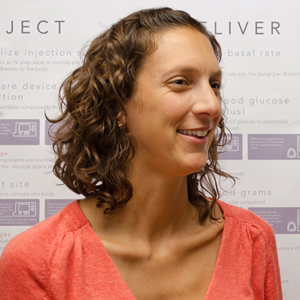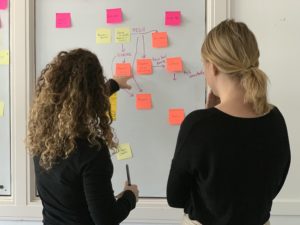Differences Between Qualitative and Quantitative Research (And When to Use Both)

Most new product development professionals have been exposed to both qualitative and quantitative research methods at some point in their careers. Both types of research are valid and valuable, and as such, they should not be considered two methods that accomplish the same thing. These are distinctly different and produce different types of data and should ultimately be used to inform different types of actions and decisions.
We are here with Carolyn Rose, Insight Product Development’s director of research and strategy to compare the two methods.
In a big picture sense, what are the differences between qualitative and quantitative research?
Most new product development professionals have been exposed to both qualitative and quantitative research methods at some point in their careers. Both types of research are valid and valuable, and as such, they should not be considered two methods that accomplish the same thing. These are distinctly different and produce different types of data and should ultimately be used to inform different types of actions and decisions.
We are here with Carolyn Rose, Insight Product Development’s director of research and strategy to compare the two methods.
In a big picture sense, what are the differences between qualitative and quantitative research?
“Typically, we say that qualitative research is the vehicle for gaining a deep understanding of behaviors, drivers and user needs and is usually conducted across a fairly small sample size. Many are often surprised to hear that patterns typically emerge across as few as six people within a fairly homogenous stakeholder/user group. Quantitative research by comparison has a wider reach across a much larger audience. This method is effective for verifying assumptions and preferences across a broader group of participants in a statistically significant way.
In order to achieve the desired depth of understanding intrinsic to a qualitative approach, methods employed are often more immersive and dynamic. With the kind of product development work that we do, we rely heavily on applied ethnography, which is the combination of observation and interviews within the environment/context of use. We may find ourselves in an OR to observe a surgical procedure, shadowing clinicians in the ICU to understand workflow and interactions or at a patient’s home to learn about their typical treatment regimen. We conduct conversational interviews, often one-on-one, that are open-ended in nature—seeking to dig into perceptions and drivers of behavior.
Comparatively, quantitative research is used to obtain measurable numeric data to create and prove multiple hypotheses across a larger sample size than quantitative studies. It utilizes one-way communication with participants via surveys, polls and questionnaires as well as other succinct and systematic interviews. It’s used to calculate attitudes, opinions, behaviors and other specific variables across a larger target population.”
At Insight we primarily provide qualitative research to our clients, why is this method critical to our design process?
“The value of qualitative research lies in its ability to provide a deeper understanding (check out our approach to longitudinal research) and specifically the ‘whys’ behind behaviors, preferences and perceptions. This understanding is often what we leverage to identify goals, needs, expectations and existing challenges associated with a particular practice or experience. Those findings help frame design opportunities. Whether we’re leveraging qualitative research to help inform a strategic direction or a development pathway, the information it yields often becomes the foundation for decision-making.Qualitative research is also highly effective when evaluating concepts. It’s important to understand what’s resonating with end users and why. What are the perceived benefits? What specific attributes of a concept are enabling them? What are the associated trade offs? And ultimately, how can we navigate that feedback to make smart choices-both in terms of down-selection of concepts and iterative refinements? In this realm, qualitative research enables our team to unpack complexities and inter-relationships that might otherwise be difficult to fully understand.”
Do the two methods work well when used together?

“Yeah definitely. Actually, the two really complement one another. With qualitative research there’s often a bit of uncertainty…how representative is this of the larger market? What role does cost play? This can be better ascertained via quantitative means. For this reason, we see the two often being used in succession. For example, once we’ve leveraged qualitative research to identify user-driven opportunities and translated those into strategic concepts, clients might follow our qualitative effort with a quantitative one. This is done both to confirm across a broader audience and in many instances include purchasing/decision-making dynamics. This might take the form of a benefits hierarchy, “jobs to be done”, or a conjoint analysis aimed at prioritizing features and attributes, the results of which become input for informing next steps. Recently, we worked on a program seeking to optimize the patient experience associated with the management of a particular chronic disease.

From this effort we identified a series of opportunities and later, solutions to address various challenges and shortcomings across the patient journey. It became clear from our qualitative effort that some of these solutions were particularly valuable to users engaging in a specific regimen that’s currently left to patient discretion. So, how many of these types of patients exist? What’s the real size of the opportunity? What is their willingness to pay? In this particular client situation, they have opted to conduct a quantitative effort to help determine just that.While our expertise is in qualitative research, we understand the value of the relationship between the two and we’ve worked with our clients toe ensure that, when needed, our qualitative outputs are effective quantitative inputs that help confirm earlier findings across larger targeted user groups. Together, the two methods support more confident decision-making throughout the development process.”
